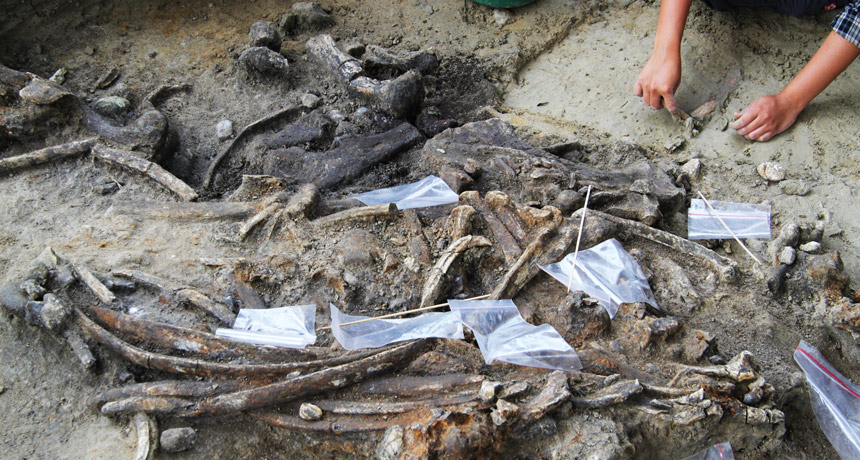Butchered rhino bones place hominids in the Philippines 700,000 years ago
The earliest known evidence had been a 66,700-year-old human toe bone

MEAT AND GREET An excavation in the Philippines unearthed the oldest evidence of hominids on these islands. Key finds consisted of rhino bones with butchery marks (shown) and stone tools.
T. Ingicco